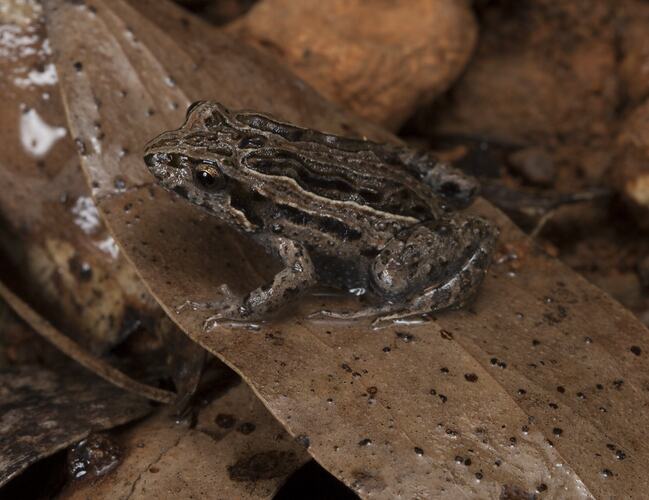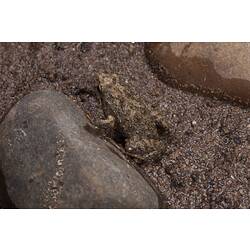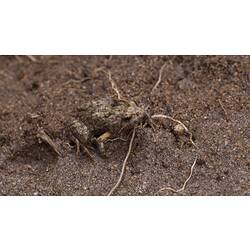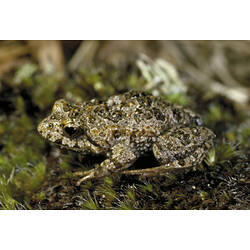General Description
Body colour and pattern highly variable. Background body colour ranges from brown, beige, grey to almost black, often with stripes, spots or patches that are either a darker or lighter colour. Sometimes a fine pale line is present on the side. Underside of body rough with patches of black, grey and white. Dark triangular markings present on upper lips. Skin on the back may be smooth or bumpy. Toes unwebbed. Body length up to 3 cm. Call a single continuously repeated "crick" three to five times sounding similar to a chorus of crickets when males are calling together. Only distinguishable from the Eastern Sign-bearing Froglet by the call.
Biology
The Common Eastern Froglet is eastern Australia's most common and widespread frog species. Adult breeding sites include temporary to semi-permanent flooded ditches, streams, grassland or permanent ponds and dams in a wide variety of habitats. Males can be heard calling all year round and will call both day and night. Calling choruses are most likely to be heard during or after rain. During the day adults shelter under logs, rocks and debris near water. Males call from the edge of the water or floating in shallow water supported by vegetation. Females lay a mass of eggs that is attached to twigs and leaves in waterbodies. The tadpoles take three months to change into frogs.
Distribution
South-eastern mainland Australia and Tasmania.
Habitat
Damp areas, streams or ponds that have plenty of shelter. Adaptable to a wide variety of habitats from alpine to coastal regions, including areas of high disturbance.
More Information
-
Animal Type
-
Animal SubType
-
Brief Id
Small ground-dwelling frog with white or grey granulated pattern with black spots on belly.
-
Colours
Black, Brown, Green, Grey, Red, White
-
Maximum Size
3 cm
-
Habitats
-
Diet
Insects
-
Endemicity
-
Commercial
No
-
Conservation Statuses
CITES: Not listed, FFG Threatened List: Not listed, EPBC Act 1999: Not listed, IUCN Red List: Least Concern
-
Taxon Name
-
Scientific Author
Girard, 1853
-
Common Name
Common Eastern Froglet
-
Kingdom
-
Phylum
-
Subphylum
-
Class
-
Subclass
-
Order
-
Family
-
Genus
-
Species Name
signifera









